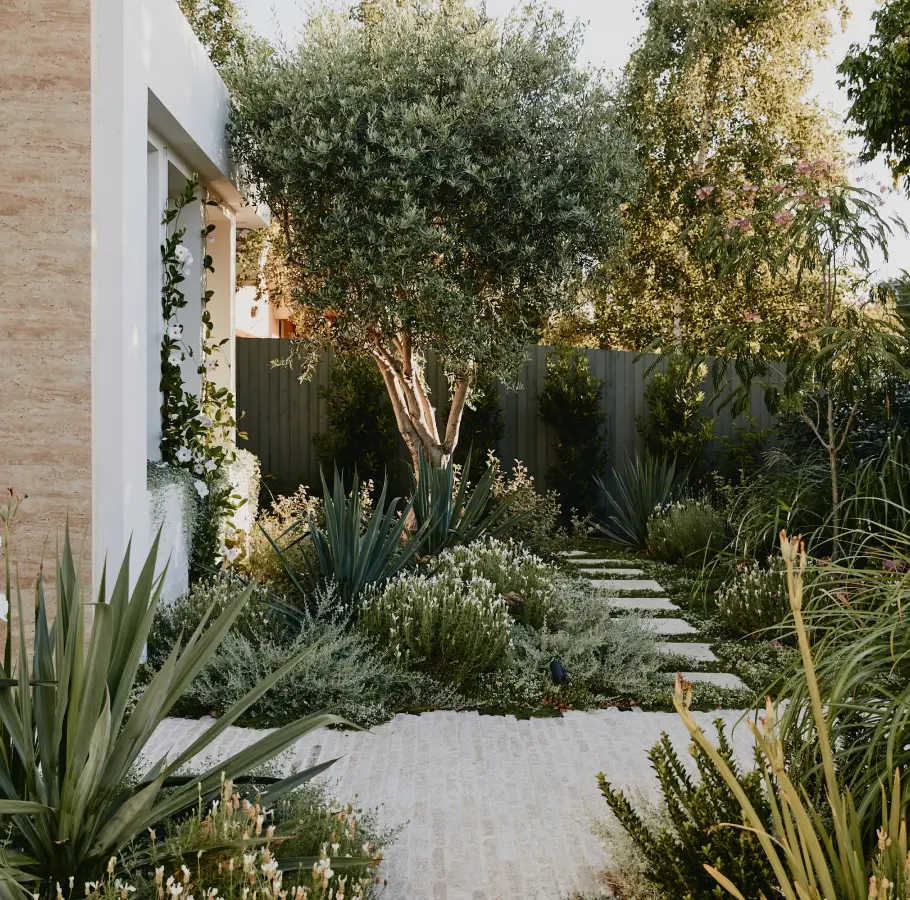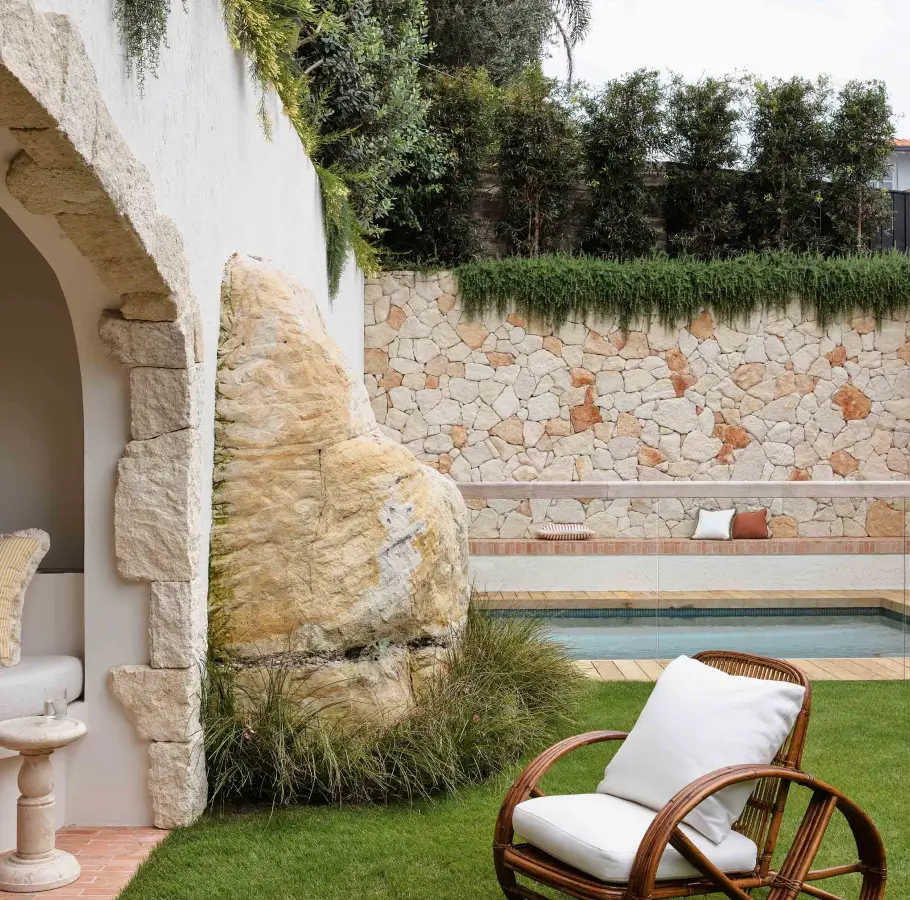- All Blogs
- Discovery
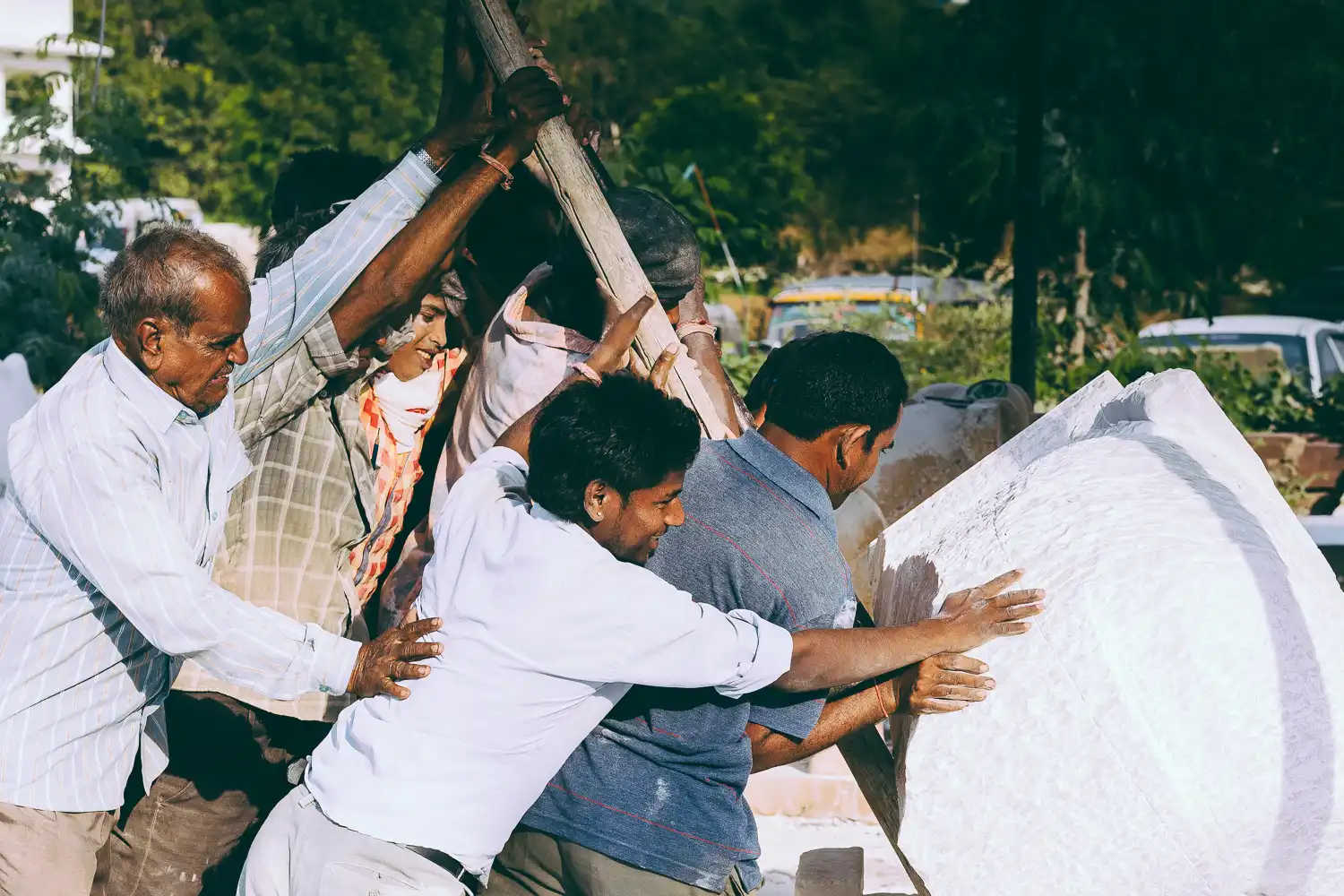
Finding Our Marbles.
CRAFTSMANSHIP, COLOUR AND CUPS OF TEA WITH THE REAL VILLAGE PEOPLE. India has a population of more than one billion and when we touched down in New Delhi, it honestly felt like they were all there to welcome us. The first thing we clocked was the immediate sensory overload. Stepping off the plane you’re slapped in the face by sights, sounds and smells. It’s exciting, stressful and magical, all at once. Eventually, we reached Jodhpur, the second largest city in Rajasthan. Walking around Jodhpur is kind of like strolling through a Jackson Pollock painting, brilliant blue corners cropping up out of nowhere. Despite enjoying everything the city had to offer our marble mission was hitting the skids and we needed to get back on track. Every promising lead turned out to be a false start, in the shape of yet another ‘handimart’. Handimarts are essentially overpriced tourist traps, selling bulk products at inflated prices. Whether it was Ganesh or just good luck, on our last visit to a handimart, the owner pulled us aside and whispered about a village nearby that shaped the magical marble we were seeking. It was ‘around the corner’ and one of his ‘cousins’ would happily take us there, were we interested? Gather Co: UNANIMOUS YES! Turns out ‘around the corner’ was actually three hours away and his ‘cousin’ was of no relation what so ever but, it gave us the chance to become familiar with Indian pop music. For the entire journey, our driver blasted his Hindi-hits playlist while we smiled politely in the backseat. Arriving in the village the journey from Jodhpur melted away as we were greeted by a sea of smiling faces. Dan’s moon tan was of much interest to the locals and while he became the people's Pale Prince, we met the marble makers. At any given time it felt like we had ten tour guides, the passion of these artisans pushing and pulling in different directions. Everyone in the village had a part to play and we spent hours learning how the marble was made -- watching the shapes being cut by machinery and then refined by hand. It was hard not to see the village as a tale of two cities. On one hand, there was no electricity, no running water, on the other, there were some of the finest sculpting talent known to man. Over cups of masala chai, the female workers brushed away the fine white marble dust that coated their colourful clothes. It was the kind of image that stays with you forever, postcard perfect. There was no mistaking that we’d found our marble collection and by that afternoon our first order was complete. We had come searching for something special in India, but it had found us first. This time on the ride back to Jodhpur, we sang along to the music, our made up lyrics a marble inspired mishmash that brought a smile to the face of our driver. It was the soundtrack to our successful search, our journey to India had hit all the right notes. Gather Co.
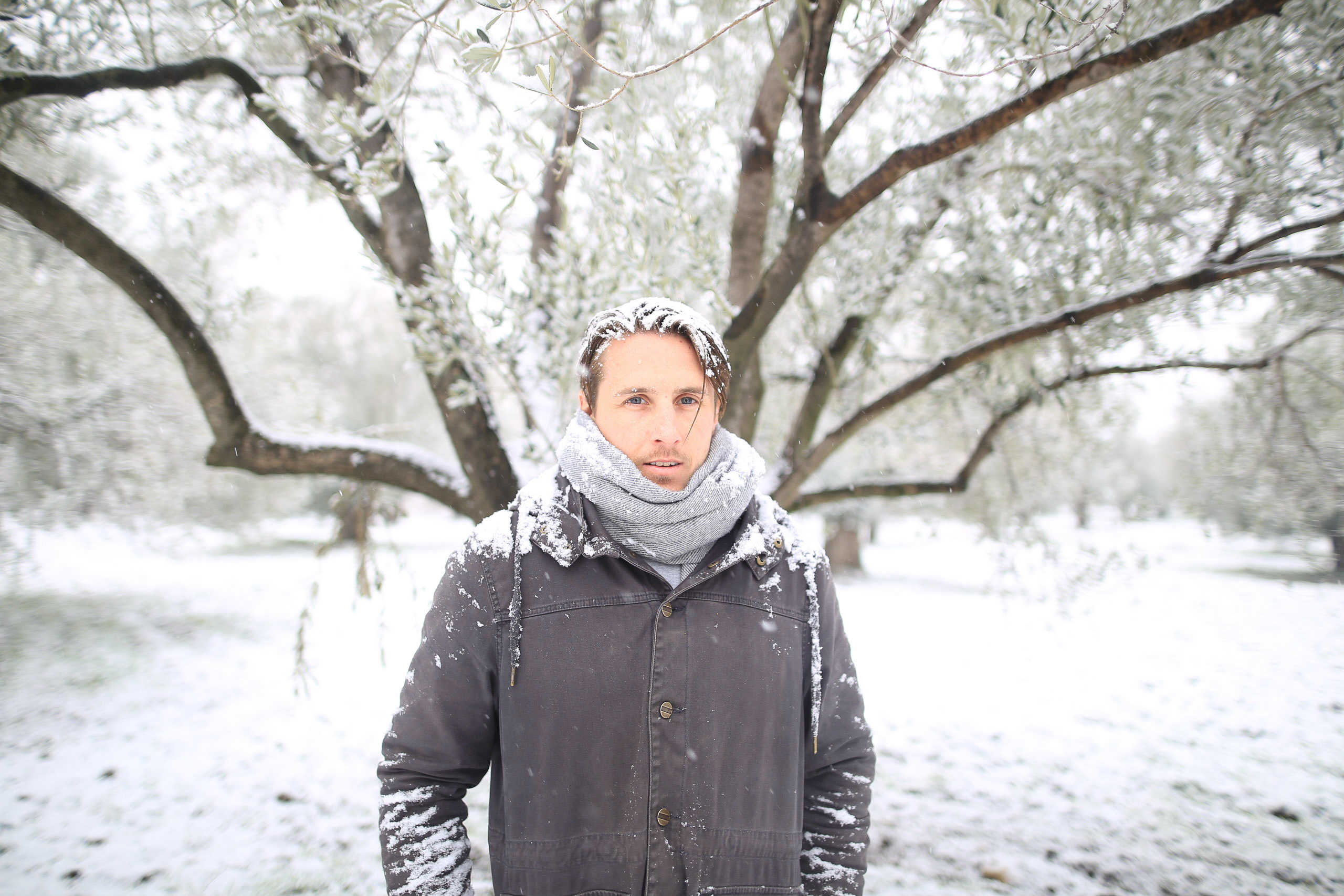
Mate, It's Cold Outside!
BARTERING IN AN UNSEASONAL BLIZZARD Some people say if you fail to plan, you plan to fail, which basically means if you’re not prepared, then chances are whatever you’re doing won’t end well. That may be true for the most part, but these people have never been stuck in unseasonal Turkish blizzard hunting for antique pottery. Confused? So were we. Let’s take a little stroll down memory lane. Back in 2016, Gather Co embarked on one of our first sourcing trips abroad. We had a hot tip that Turkey’s Anatolian coastline was flush with antique pottery. It was to be the only hot thing about this journey. The coastline was dotted with tiny towns, so we pretty much picked a point on the map and started the hunt. Village hopping proved to be rewarding and risky in equal measure. Some locals had great leads on where we might find pieces for our collection, others were just bemused to see a few clueless Australians so far away from home. Our big break came when we met Mr Diesel - no relation to Vin. He was rarely seen without a hip flask of local linseed flavoured liqueur, though it tasted more like diesel to us and so the nickname stuck. Mr Diesel took great pleasure in recounting the history of the pieces we sourced. Every bowl, urn, jug and jar had been on a journey and Mr Diesel was the man to tell their tale. We started to find a rhythm, each village tossing up their very own Turkish delights. Then the blizzard hit and everything stopped. For those of you unfamiliar with Turkish weather, snow is pretty rare while blizzards are basically unheard of. This wasn’t inclement weather, this was insane weather. Needless to say, we were ill-equipped, underprepared and overly optimistic - quite the combination. Before we could continue our hunt we made a mad dash to a local mart and panic-purchased every piece of clothing on offer - jackets, gloves, beanies.You name it, we bought it. Adequately rugged up, we were ready to rock and roll, but then came the next stumbling block.Haggling verb dispute or bargain persistently, especially over the cost of something. Turkish transactions often involve a little bit of back and forth and a lot of yelling. It’s a real skill and one we’ve since mastered but back then - in a blizzard no less - we were out of their depth.Luckily our perseverance and persistence helped us survive the bartering process. We quickly learnt that if you’re loud enough and act confidently, then negotiation in subzero temperatures is a breeze. As the mercury plummeted our spirits soared, the Turkish coastline had proven to be a surprising trip full of unexpected victories.The Gather Co collection was the biggest winner, bolstered by the hidden secrets we’d haggled over in an unseasonal Turkish blizzard - it doesn’t come much better than that. As our trip came to an end, we spent our last days soaking up the snow.The villagers were long gone, the cold sending them (sensibly) indoors. But for us, the blizzard represented the reward that comes with risk.As the snow fell we risked possible frostbite to dance under the olive trees and the only sound was a murmur from a nearby hut.Villagers: o çılgın Avustralyalılar Translation: Those crazy Australians!Crazy indeed.Gather Co.
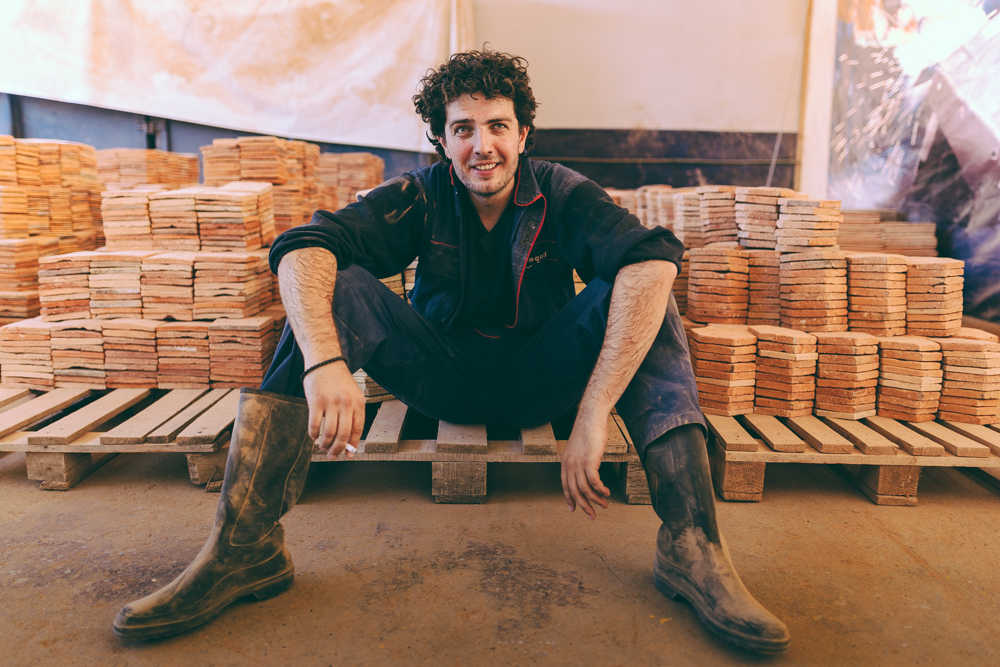
How to Survive Serbian Home-Brew.
For most people in their twenties, a trip to Europe is an excuse to up their Instagram game. They’ll spend a few sun-soaked weeks taking photos in Positano before returning home tanned, terrific and talking with an accent. But GatherCo’s latest jaunt was less about pretty pictures and more about snapshots of the past. We were headed for Serbia, not the kind of place most travellers make a beeline for, but a country we’d soon learn was full of surprises. Once we touched down, Serbia’s seduction was fast and furious -- it’s hard not to fall in love with a place that offered such a generous glimpse into its history. Belgrade has been through the wars and the scars of battle were reflected in its architecture. We were desperate to see the beauty of this city from above and in exchange for a six pack of Jelen Pivo beer, some local Belgrade lads took us to an inner-city rooftop. From high above, the city really began to reveal its secrets and there was one thing we all noticed straight away - eye-catching terracotta tiles. We’d seen the tiles earlier, scattered throughout Belgrade, all different parts of the same story. But from this view, they came together, each one a different size, shape and colour. It was exactly what we were after. After an agonising Google search in Belgrade’s slowest internet cafe, we learned that the tiles originated in an area one hour north of the city. We hired a van and while it lacked the typical mod-cons - like power steering and air-con - it did have the important stuff, like brakes and wheels. As temperatures topped forty degrees our sweaty search for these magical til Piling out of our sauna-on-wheels, we were greeted by Mishko, a boisterous Serb who spoke rapidly and loved to yell. Born and raised in Belgrade, he knew the history of his city back to front. We liked him immediately. An apricot farmer by trade, Mishko also had a second job - a Serbian side hustle, if you will - which involved visiting dilapidated buildings and repurposing terracotta tiles. A proud man, Mishko recognised that these relics were not ready to be cast aside, but in fact, they were as ripe as the fruit being farmed around us. To celebrate our new partnership, Mishko invited us back to his house for a traditional feast which involved eating hundreds of apricots and drinking rakija. Rakija is a home-brew and it’s beyond potent. Not a minute went by without Mishko raising his glass, smiling at us and yelling....

Shall We Order Chinese?
SEARCHING SHANGHAI AND FINDING A MAN NAMED LUO. If you haven’t done your research, then Shanghai can intimidate even the most experienced traveler. Luckily for us, years spent studying dumpling menus paid dividends and upon arrival, we felt both comfortable and weirdly hungry. While a first-rate feast was top of the list, we ended up stumbling across a far more delicious discovery…We’d always been told that Shanghai is a city where ‘old meets new’ but to be honest that seemed like something you slap on the front of a Lonely Planet guide to lure tourists in.Then we arrived and it all made sense. Shanghai: A spectacular city where you can’t help but notice the clash between the old world and the new frontier. Around every corner, we found ourselves delightfully confused. The architecture was a particular feast for the eyes. Inspired by a myriad of periods, styles and cultural influences there really isn’t any place in the world quite like it – hands-down.The precinct is now inhabited by dozens of high end retailers as well as a generous selection of world class hospitality.We wandered around for hours, letting the city soak in and doing our best not to be mown down by frantic drivers. Note to readers: traffic in Shanghai is terrifying. Needless to say, we’d worked up quite the appetite so we ducked into a downtown dumpling house for a quick feed. While eating our body weight in Xiaolongbao I was finally able to use one of the phrases I’d memorised before touching down in Shanghai.ME: Nà tài hào chīle. Qǐng zài gěi wǒ yīgè!Translation: That was delicious. One more please!Fed and watered, Shanghai had already won us over, but the best was yet to come. We strolled through Shanghai Town, eventually arriving in the Xintiandi precinct. Xintiandi is pretty much a snapshot of what Shanghai is about - a melting point of tradition and trend. The streets are lined with cafes, wine bars and upscale designer shops, but that wasn’t what caught our eye.It was here we found Shanghai’s greatest concentration of Shikumen houses. Shikumen is the architectural style that bubbled to the surface during the French occupation of the city during the 1800’s and it’s not hard to see the Euro-influence. Although western influences are very strong, Xintiandi still remains unquestionably Chinese.Millions of footsteps every year have naturally polished the maze of beautifully laid herringbone ally-ways.The wonderful Mr Luo.The Xintiandi laneways were bursting with terrace houses that seemed part Parisian, part Art-Deco and part Shanghai - it was both bizarre and brilliant. We had no choice but to walk these laneways, running our hands along the bricks of the Shikumen, trying to listen to the whispers of their history.We all immediately agreed that we’d found what we were looking for - a product that represented what we believed in. These ancient Shikumen bricks had a story, a handcrafted history that we wanted to bring home. Which leads us to the man they call Mr Luo. Once we’d decided that these ancient bricks would be a rich addition to the ever-evolving face of Australian design we started asking around about who might be able to help us out. One name came up time and time again - Mr Luo.Mr Luo was born and raised in Xintiandi and as he spoke of the area, its history and its significance we knew he was the right partner. Luo recalled how the antique bricks became the crucial part of the puzzle in the Shikumen era, helping define the architecture of the precinct. But during the tumultuous reign of Chairman Mao, much of the magic of Xintiandi was destroyed.A once great city had become a victim of upheaval and change, so too had its buildings.Mr Luo was on hand as his beloved precinct looked to rebuild in the late 1990s. His little business, which repurposes bricks from abandoned buildings, helped play a part in restoring Xintiandi to its former glory by supplying the antique bricks. Hearing Mr Luo talk about constructing the new with the old, using the past to make the present, it was clear his legacy needed to be a part of our product.The Luo Family – Shanghai Antique Brick. Embedded with memories of the past, The Luo Family bricks have endured the city’s colourful history to maintain their presence as the building blocks of today and tomorrow. Leaving Shanghai with far more than we’d bargained for - namely a massive brick order and an appreciation for the city’s dedication to dumplings - Gather Co was excited. It’s an honour to bring this evocative history from Shanghai to design and architecture projects here in Australia.Long Live Mr Luo!Gather Co.

